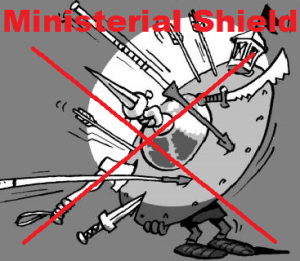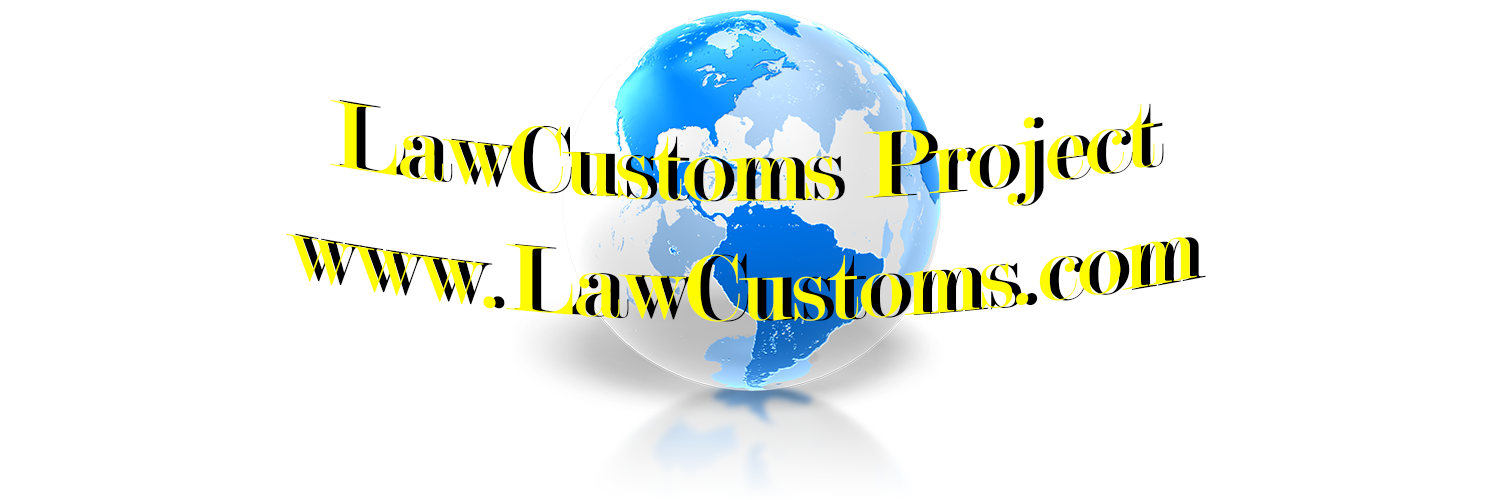 In the Corning Gilbert Inc. v. U.S., importer asked the Court of International Trade for an opinion about Customs and Border Protection (CBP) role in enforcing decisions of other agencies. The specific issue concerned general exclusion order issued by International Trade Commission (ITC) in the patent infringement investigation for coaxial cable connectors. Exercising ITC’s authority under 19 U.S.C. § 337(d)(2)(a), the Commission directed CBP to exclude all unlicensed “coaxial cable connectors that infringe claim 1 and/or claim 2 of U.S. Patent 6,558,194.” Id. Since the patent in question has only two claims, the ITC’s decision essentially concerned the whole patent. Now here is the interesting part: when deciding whether or not to exclude the merchandise, can CBP rely on interpretations of the ITC, or should CBP make its own inquiry? In Corning Gilbert, CBP thought that reliance on ITC’s interpretation would suffice. The Court, however, disagreed and requested CBP to exercise its own discretion: “Customs may have to go beyond the mechanical application of the ITC’s Section 337. It may have to look at evidence and analyze whether the importer, particularly a non-party such as Corning Gilbert, has established non-infringement.” Id.
In the Corning Gilbert Inc. v. U.S., importer asked the Court of International Trade for an opinion about Customs and Border Protection (CBP) role in enforcing decisions of other agencies. The specific issue concerned general exclusion order issued by International Trade Commission (ITC) in the patent infringement investigation for coaxial cable connectors. Exercising ITC’s authority under 19 U.S.C. § 337(d)(2)(a), the Commission directed CBP to exclude all unlicensed “coaxial cable connectors that infringe claim 1 and/or claim 2 of U.S. Patent 6,558,194.” Id. Since the patent in question has only two claims, the ITC’s decision essentially concerned the whole patent. Now here is the interesting part: when deciding whether or not to exclude the merchandise, can CBP rely on interpretations of the ITC, or should CBP make its own inquiry? In Corning Gilbert, CBP thought that reliance on ITC’s interpretation would suffice. The Court, however, disagreed and requested CBP to exercise its own discretion: “Customs may have to go beyond the mechanical application of the ITC’s Section 337. It may have to look at evidence and analyze whether the importer, particularly a non-party such as Corning Gilbert, has established non-infringement.” Id.
This holding is significant in light of CBP’s peculiar role as an administrative agency that is bound to enforce multitude of laws of other government agencies. See e.g. Summary of Laws Enforced By CBP. When enforcing laws of other agencies, CBP can defer to the expertise of other agencies and regards its own role as purely ministerial. But, that can change. In the context of antidumping duties, for example, CBP doubled the duties for those importers that failed to file non-reimbursement certificate timely, citing 19 C.F.R. § 351.402. Looking at the hefty duties bill, non-suspecting importers rushed to file the certificate in good faith, but would find itself looking at the ministerial shield: See e.g. HQ W231346 (stating that “Customs only applies antidumping rates determined by Commerce. Further, Customs has a merely ministerial role in liquidating antidumping duties under 19 U.S.C. § 1514(a)(5). Customs cannot ‘modify . . . [Commerce’s] determinations, their underlying facts, or their enforcement.”). Of course, ministerial position in antidumping context is questionable. 19 C.F.R. § 351.402 does not require the assessment but merely permits it: “The Secretary [of the Department of Commerce] may presume from an importer’s failure to file the certificate required in paragraph (f)(2) of this section that the exporter or producer paid or reimbursed the antidumping duties or countervailing duties.” Id. (emphasis supplied). In such context, the “ministerial” role of CBP has an affect of conclusive (not rebuttable) presumption of reimbursement. Even Department of Commerce disagreed with Customs asking it to stop hiding behind the ministerial shield and using more discretion. See Guidance For Reimbursement Certificates, ¶ 12 (“On November 23, 2011, Commerce clarified that reimbursement certificates may be submitted in a CBP protest in order to rebut the presumption of reimbursement.”).
CBP’s ministerial track record is has now been criticized in both administrative and judicial channels. For CBP, this means a higher degree of review at the substantive level and exercising greater legal discretion, even if this means application of laws used by other agencies. The opinion may implicitly suggest that substantive analysis is the default for CBP, subject to “ministerial” discretion otherwise stated. For Corning Gilbert, such “ministerial” exception (i.e. blind deference to ITC findings) would be applicable if the importer had “an opportunity to litigate is position before the ITC.” Id. The court clarified what “an opportunity” really means: “Corning Gilbert was not named respondent in this investigation.” Id. Therefore, not being named as a respondent → no opportunity → ITC order not having a preclusive effect on the importer → CBP losing ministerial shield → requirement to engage in the substantive analysis on the merits of the particular product in question. Id. citing Yingbin-Nature (Guangdong) Wood Indus. Co. v. United States, 535 F.3d 1322, 1332-33 (Fed. Cir. 2008) (noting that ITC findings of infringement are preclusive only as to parties who have had a full and fair opportunity to litigate the issues before the ITC, citing Comair Rotron, Inc. v. Nippon Densan Corp., 49 F.3d 1535, 1537 (Fed. Cir. 1995)). For the importer, Corning Gilbert means the critical review of CBP analysis and making certain that the agency comes out from “ministerial” hiding when it is not required.
 In fairness to CBP, the agency does not always hide behind the ministerial shield. With a bit of different twist, but in the shadow of the same legal principles, CBP used its substantive sword to decide on the ITC’s exclusion order applicability for some of Motorolla’s products. HQ H226615 (2013). This brought disgrace on the part of Microsoft that would like to place CBP in its ministerial hideout. Id. at ¶ 30 (“Neither the Secretary [of DHS], nor her ‘proper officers,’ [CBP] has discretion to allow entry of articles when the Commission [ITC] has directed that they ‘be excluded from entry into the United States.”). But at least with Microsoft, CBP prefers the substantive sword to ministerial shield. In HQ H242025 (2013) CBP enjoyed the substantive dialogue. Id. (“CBP will not refuse entry on the basis of features that were present on the accused devices at the time of the ITC investigation but were not specifically accused and found to satisfy the limitations in the asserted patent claims identified in the exclusion order.”). CBP won the first round at the administrative level. The drama changed its venue to District Court for the District of Columbia, where Microsoft is no stranger. Just over a decade ago, Microsoft walked out from the Columbia District Court with the criminal conviction. U.S. v. Microsoft Corp., 97 F. Supp. 2d 59 (D.D.C. 2000) (“The Court having entered judgment in accordance with the Findings of Fact and the Conclusions of Law on April 3, 2000, that Microsoft has violated & sect; & sect; 1 and 2 of the Sherman Act, 15 U.S.C. & sect; & sect; 1, 2, as well as the following state law provisions …”). Although Microsoft was able to overturn the punishment, the criminal label of a monopolist stayed with the company. Massachusetts v. Microsoft Corp., 373 F. 3d 1199, 1203 (D.C. Cir. 2004) (“we affirmed in part and reversed in part the judgment of the district court holding Microsoft had violated §§ 1 and 2 of the Sherman Antitrust Act”). Perhaps, one may sense a feeling of deja vu, being that the Microsoft walked out blamed for illegal monopoly behavior, but is now coming back with “legal monopoly” behavior (the legal monopoly phrase is coined from the U.S. Supreme Court opinion in Zenith Radio Corp. v. Hazeltine Research, Inc., 395 US 100 (1969)). The drama is still unfolding, but it is hard not to think that there is just something about words such as “Microsoft” and “monopoly” recurring together.
In fairness to CBP, the agency does not always hide behind the ministerial shield. With a bit of different twist, but in the shadow of the same legal principles, CBP used its substantive sword to decide on the ITC’s exclusion order applicability for some of Motorolla’s products. HQ H226615 (2013). This brought disgrace on the part of Microsoft that would like to place CBP in its ministerial hideout. Id. at ¶ 30 (“Neither the Secretary [of DHS], nor her ‘proper officers,’ [CBP] has discretion to allow entry of articles when the Commission [ITC] has directed that they ‘be excluded from entry into the United States.”). But at least with Microsoft, CBP prefers the substantive sword to ministerial shield. In HQ H242025 (2013) CBP enjoyed the substantive dialogue. Id. (“CBP will not refuse entry on the basis of features that were present on the accused devices at the time of the ITC investigation but were not specifically accused and found to satisfy the limitations in the asserted patent claims identified in the exclusion order.”). CBP won the first round at the administrative level. The drama changed its venue to District Court for the District of Columbia, where Microsoft is no stranger. Just over a decade ago, Microsoft walked out from the Columbia District Court with the criminal conviction. U.S. v. Microsoft Corp., 97 F. Supp. 2d 59 (D.D.C. 2000) (“The Court having entered judgment in accordance with the Findings of Fact and the Conclusions of Law on April 3, 2000, that Microsoft has violated & sect; & sect; 1 and 2 of the Sherman Act, 15 U.S.C. & sect; & sect; 1, 2, as well as the following state law provisions …”). Although Microsoft was able to overturn the punishment, the criminal label of a monopolist stayed with the company. Massachusetts v. Microsoft Corp., 373 F. 3d 1199, 1203 (D.C. Cir. 2004) (“we affirmed in part and reversed in part the judgment of the district court holding Microsoft had violated §§ 1 and 2 of the Sherman Antitrust Act”). Perhaps, one may sense a feeling of deja vu, being that the Microsoft walked out blamed for illegal monopoly behavior, but is now coming back with “legal monopoly” behavior (the legal monopoly phrase is coined from the U.S. Supreme Court opinion in Zenith Radio Corp. v. Hazeltine Research, Inc., 395 US 100 (1969)). The drama is still unfolding, but it is hard not to think that there is just something about words such as “Microsoft” and “monopoly” recurring together.
